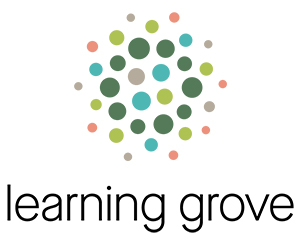By Brett Jager
United Way of Greater Cincinnati
Since 2008, the United Way-managed Partners for a Competitive Workforce (PCW) has worked to close the skills gap in our region by training people to fill in-demand jobs in the areas of health care, advanced manufacturing, supply chain management, construction and information technology.
The results speak for themselves:
Over 11,200 individuals served
79% obtained employment
67% retained their job for at least one year
Annual earnings increased by up to $7,500
Despite the outstanding results, PCW was beginning to see a number of folks who were trained and getting the credentials employers said they wanted, were either unable to get a job or weren’t taking a job. Peers from around the country were seeing a similar trend and all wondered what they were missing. PCW and others began looking at various employers across the country that through the recession were able keep employees gainfully employed, and the lightbulb went on.

Janice Urbanik
“We realized these employers had very good internal practices for recruiting, retaining and advancing their workers,” said Janice Urbanik, executive director, Partners for a Competitive Workforce. “As we started to dig into these companies and their internal practices, we knew we were on to something. Over the span of the last three years, we’ve really been learning more about the practices, and the types of employers who tend to implement these practices. We’ve talked to a lot of employers that are facing issues with recruiting and retention, and realized that we need to start looking at these practices rather than just focusing on training people for jobs.”
Thus, a new approach for PCW was born.
After years of focusing primarily on training people for in-demand jobs, they decided to now also focus on working with employers on how they can more effectively attract, retain and advance talent. With help from a grant from the Hitachi Foundation through the National Fund for Workforce Solutions, PCW will work with three Northern Kentucky manufacturing companies: Indy Honecomb, Steinkamp Molding and Post Glover Resistors.
The grant totals $100,000 with $50,000 coming from the Hitachi Foundation via the National Fund, $25,000 coming from the Greater Cincinnati Foundation, and the remainder coming from the three participating employers. PCW will work with the three employers to analyze and address job quality challenges that create recruiting and retention challenges. The work will be aligned with the Advanced Manufacturing Workforce Development Coalition in Northern Kentucky to fill the talent pipeline for manufacturing jobs.
“What we’re trying to figure out is how do we help an employer attract someone who is either unemployed or already working — but perhaps multiple part time jobs or low wage situations — and how do we create a system or job that is so attractive that it makes people want to leave those multiple part time jobs to take this job,” said Urbanik.
Examples of successful internal practices from employers:
Providing funding for training – hire people and immediately send them to training
Negotiated agreements between employers to move people as they “top out”
5% of labor budget allocated to ongoing training and advancement opportunities
Front line manager training
Work schedules that match bus, school and childcare schedules
Retention coaches – Proven to improve retention by over 50%
Wages, benefits and bonus structures that lead to economic security and self-sufficiency

One local employer that has successfully implemented one of these practices is Richards Industries. They provided deep input to a community college and invested in a training program to provide the skills and competencies they needed from their employees. They saw an 875% return on investment on employees that went through the training program.
“They were hiring people that virtually had no skills and sent them to the training,” said Urbanik. “What they found was the people who came in and took that very focused training program got to full productivity years before people who had not gone through the program. For every dollar they invested in the training, they were seeing $8.75 back in increased productivity, which directly affects the bottom line for the business.”
In 2017, the Child Poverty Collaborative has also committed to working with employers as part of its strategy to move children and families out of poverty. This past October, as one of their five commitments to the community, the Child Poverty Collaborative announced the creation of an Employer Roundtable with the goal of bringing together 30+ employers of varying size and industry to learn together, share example of changes they’ve implemented to improve the lives of their entry-level employees, listen to those employees, and possibly test out new ideas.
The roundtable is currently being chaired by P&G, Kroger, Tri-Health, Macys, Jostin Construction and the African American Chamber in collaboration with Partners for a Competitive Workforce.
“This is kind of the new frontier of workforce development, and we’re very hopeful of the results because we’re getting a lot of interest from employers that want to look into these practices,” said Urbanik. “With 72% of our local jobs paying less than a self-sufficient wage, employers are recognizing that they need to have a role and get engaged in helping lift people out of poverty.”


















